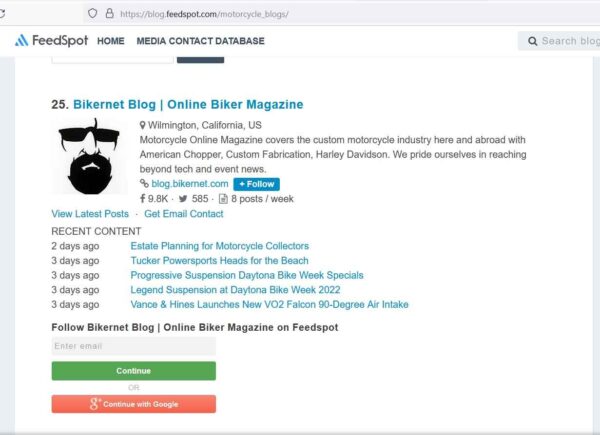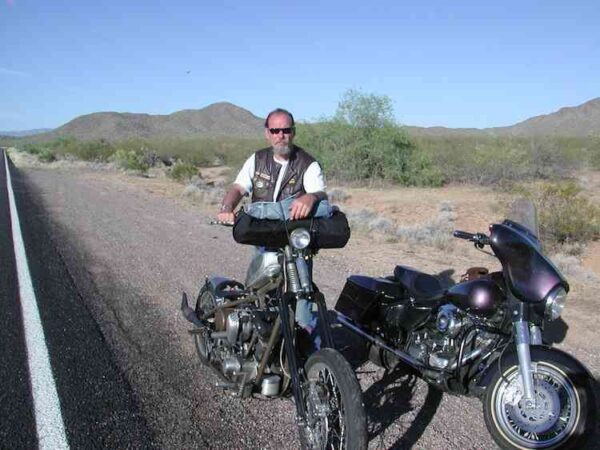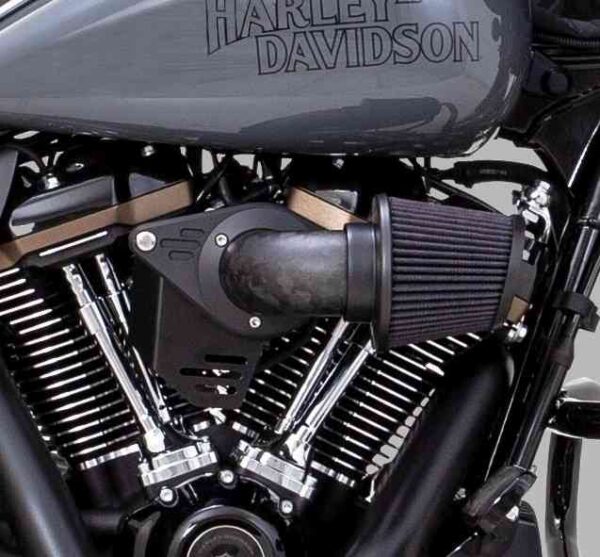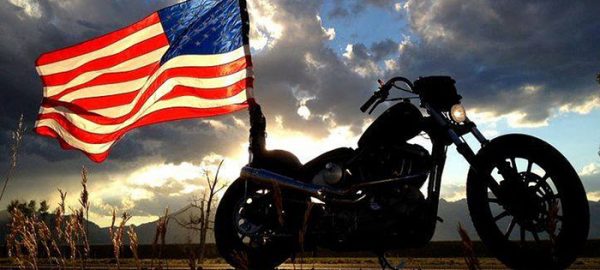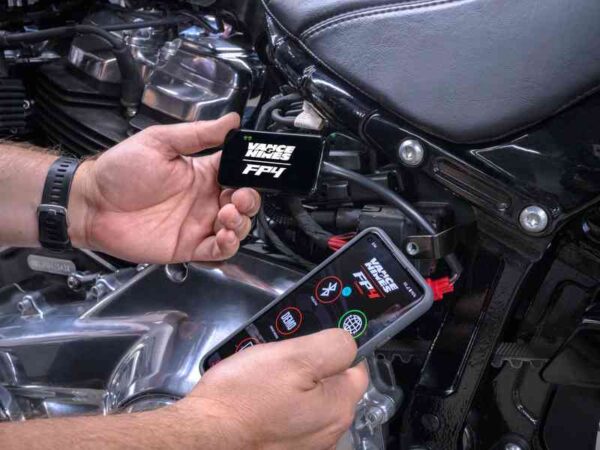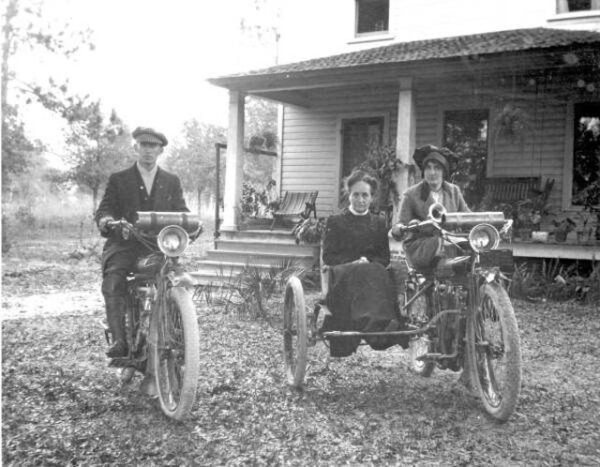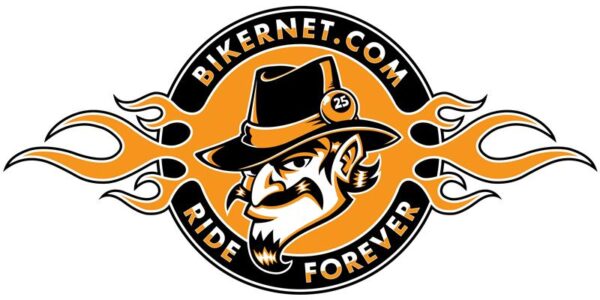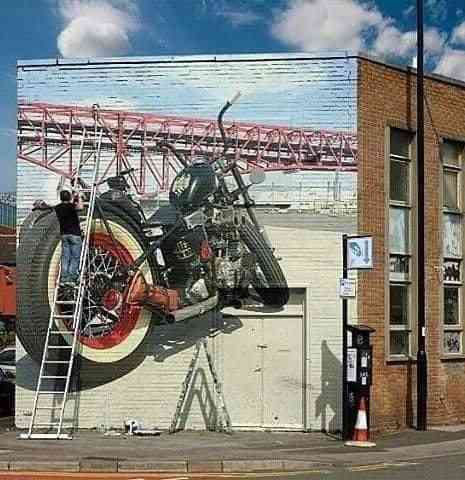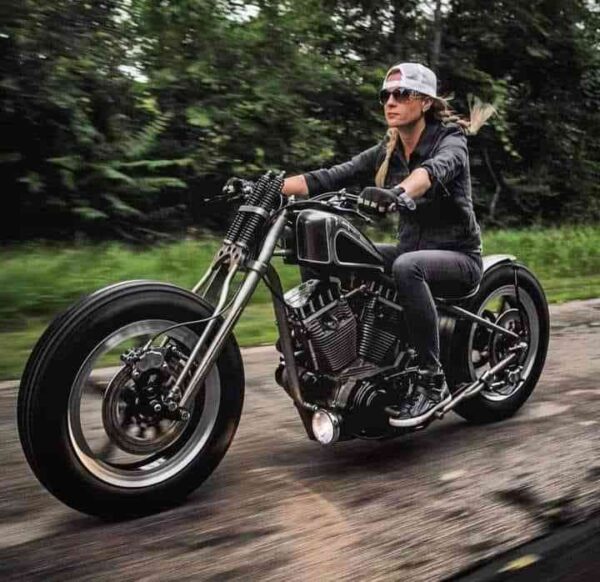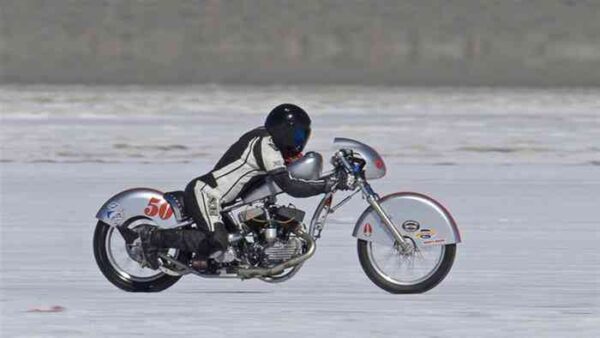Bikernet Blog is in Top 25 Motorcycle Blogs on the web
By Renegade FeedSpot.com regularly checks for the best Motorcycle Blogs from innumerable motorcycle related blogs on the internet. They investigate the Blogs for regular new content, hits from search engines, people subscribing to the blogs, variety or specialization in the motorcycle market and industry, daily traffic, social media followers, domain authority, presentation and much more algorithms for ranking the blogs. Bikernet Blog is consistently rated in the Top 100 Motorcycle Blogs on the internet. Considering Feedspot media database has over 100,000 curated list of Influential Bloggers in 1500 niche categories – this is quite a success story for Bikernet Blog. See Latest Rankings at: https://blog.feedspot.com/motorcycle_blogs/ Last year Bikernet.com hit the 25-year marker in the business, which was a major milestone after starting in 1996, when the web was super-young. What sets the Bikernet Blog aside from other blogs is their ability to deliver comprehensive coverage on all aspects of motorcycling – including customers, custom builders, legislative, dealerships, aftermarket parts, corporate news, industry, outlaws, market news, motorsports, freedom fights, off-road, tech & tips, infrastructure updates, women achievers in motorcycling, events, reviews, accessories, changes in laws, travel tips and most importantly the fun & joy of bikerdom. CLICK HERE To Read more on this milestone of the Bikernet Blog. Don’t hesitate to reach out to us regarding advertising which supports our platforms and contributors. Advertising is simple and will get you a comprehensive reach on Bikernet.com, the Bikernet Blog, Bikernet Weekly email newsletter and Bikernet Facebook Page. Plus, get support for your client-specific advertising and marketing needs. We can build a custom chop and we can shape a custom promotion for you as well. Refer Advertising Options on Bikernet.com by CLICKING HERE.
Bikernet Blog is in Top 25 Motorcycle Blogs on the web Read More »

